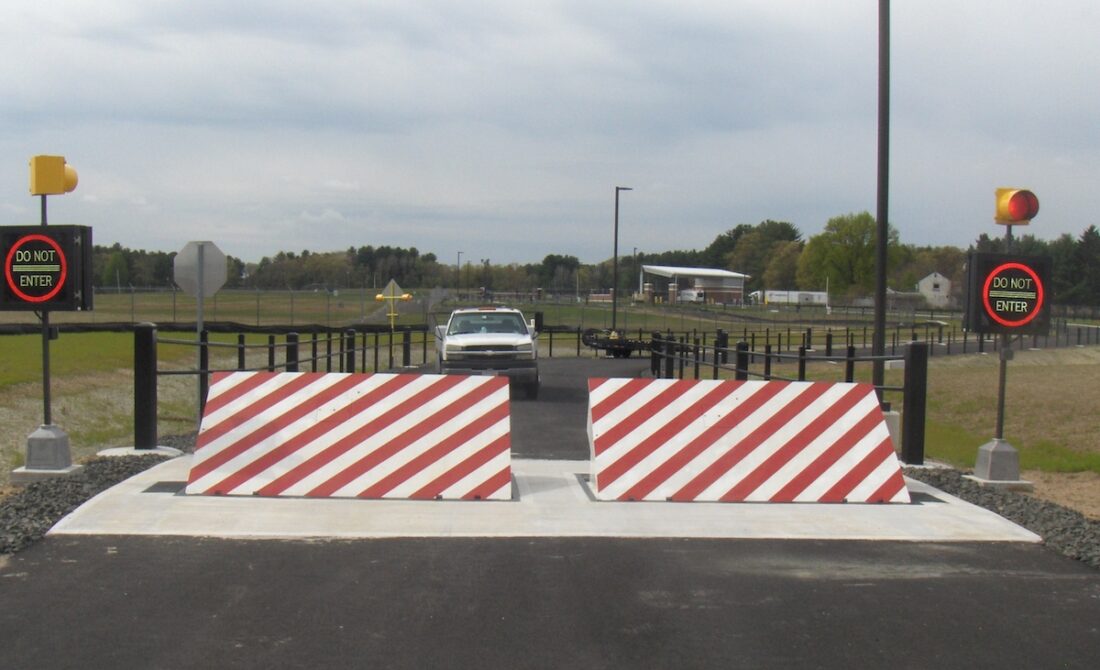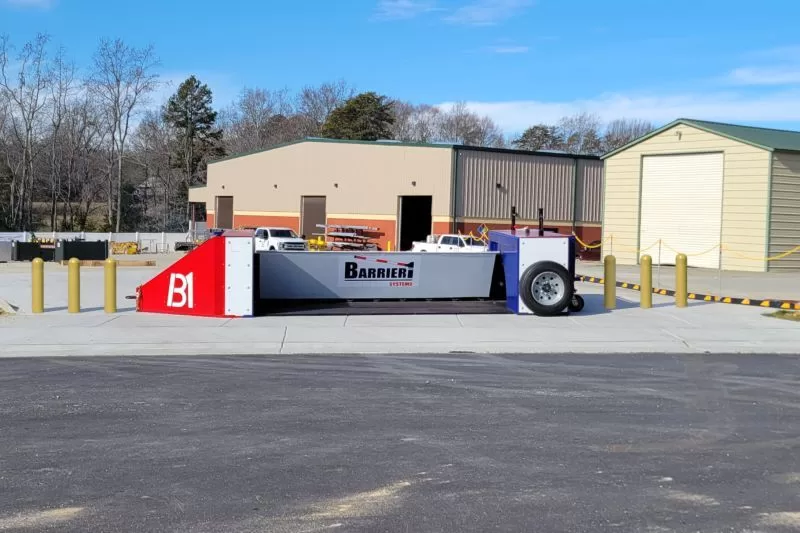Wedge Barriers - Questions
Get This Report about Wedge Barriers
Table of ContentsWedge Barriers for BeginnersThe Facts About Wedge Barriers Uncovered


18 may be done a lot more quickly, conveniently, and cost properly. FIG. In certain personifications, the anchor 30 may be a steel structure including plates, beam of lights(e. g., I-beams ), and/or various other structures that are protected within the structure 14, which might be concrete. At the surface 12, a top side 28 of the anchor 30 may go to least partially subjected
, thereby allowing the add-on of the obstacle 10 to the anchor 30. g., threaded holes)in one or even more light beams or plates of the support 30 may be subjected to the surface area 12. In this fashion, bolts 32 or other mechanical fasteners may be utilized to safeguard the obstacle 10 to the support 30. As the barrier 10 is mounted to the surface 12 of the foundation 14, collection of debris and other product under the obstacle might be reduced, and components of the bather 10 may not be subjected to listed below quality settings. As shown by referral numeral 52, the lifting mechanism 50 consists of parts got rid of underneath the wedge plate 16. The components 52 below the wedge plate 16 may include an electromechanical actuator, a cam, one or more cam surface areas, and so forth. In addition, the training device 50 consists of a spring assembly 54
The springtime pole 58 is paired to a camera(e. g., camera 80 displayed in FIG. 4) of the lifting device 50. The springtimes 60 disposed concerning the spring rod 58 are kept in compression by springtime supports 62, including a dealt with spring assistance 64. That is, the set spring support 64 is fixed about the structure 14 and the remainder of the bather 10.
4 Easy Facts About Wedge Barriers Explained
The remaining force applied to
the cam webcam deploy the wedge plate 16 may be provided supplied an electromechanical actuator 84 or other various other. The springtime setting up 54 and the actuator 84(e. Wedge Barriers. g., electromechanical actuator)might run with each other to convert the cam and raise the wedge plate 16.
As mentioned above, the spring assembly 54 exerts a continuous force on the camera, while the electromechanical actuator might over at this website be managed to put in a variable pressure on the web cam, consequently allowing the lifting and lowering( i. e., releasing and withdrawing )of the wedge plate 16. In particular personifications, the consistent pressure applied by the spring setting up 54 might be flexible. g., electromechanical actuator) is handicapped. As will be appreciated, the spring setting up 54 might be covered and secured from particles or other elements by a cover plate(e. g., cover plate 68 received FIG. 4) that might be considerably flush with the raised surface 38 of the foundation 14. As stated over, in the deployed position, the wedge go to this web-site plate 16 offers to obstruct gain access to or travel past the obstacle 10. The obstacle 10(e. g., the wedge plate 16 )may obstruct pedestrians or automobiles from accessing a residential property or pathway. As talked about over, the barrier 10 is connected to the support 30 protected within the foundation 14,

front brackets 71. Therefore, the linkage assemblies 72 may pivot and rotate to enable the collapse and extension of the linkage assemblies 72 throughout retraction and release of the bather 10. The affiliation settings up 72 reason motion of the wedge plate 16 to be limited. For instance, if an automobile is taking a trip towards the deployed wedge plate 16(e. For example, in one situation, the security legs 86 might be prolonged duringmaintenance of the barrier 10. When the security legs 86 are deployed, the safety and security legs 86 sustain the weight of the wedge plate 16 against the surface 12. Because of this, the training device 50 may be deactivated, serviced, gotten rid of, replaced, and so visit the website forth. FIG. 5 is partial viewpoint sight of an embodiment of the surface-mounted wedge-style obstacle 10, highlighting the webcam 80 and the cam surfaces 82 of the lifting mechanism 50. Especially, 2 camera surfaces 82, which are described as reduced camera surfaces 83, are placed below the webcam 80. The reduced webcam surface areas 83 may be repaired to the surface area 12 (e. As an example, the lower camera surfaces 83 and the placing plate 85 may create a solitary piece that is protected to the anchor 30 by screws or other mechanical bolts. Additionally, 2 webcam surface areas 82, which are referred to as top webcam surface areas 87, are positioned over the cam 80 and combined to (e. In other embodiments, intervening layers or plates may be placed between the surface area 12 and the lower camera surface areas 83 and/or the wedge plate 16 and the upper camera surfaces 87 As pointed out over, the webcam
80 converts along the webcam surfaces 82 when the wedge plate 16 is raised from the pulled back placement to the deployed setting. Additionally, as pointed out over, the spring assembly 54 (see FIG. 3 )might give a force acting upon the web cam 80 in the direction 102 by means of springtime rod 58, which might minimize the force the electromechanical actuator 84 is called for to relate to the camera 80 in order to actuate and lift the wedge plate 16. 1 )to the deployed position(see FIG. 4). As revealed, the cam 80 includes track wheels 104(e. g., rollers), which call and convert along the webcam surfaces 82 throughout procedure.